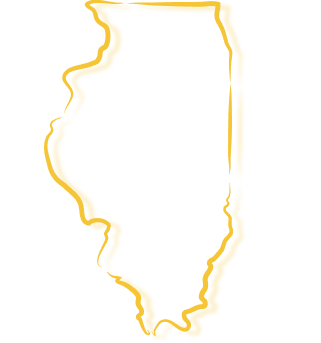Driving Habits That Commonly Cause Accidents

By Zane T. Cagle | March 14, 2019 | Car Accidents
Habits are acquired behaviors or behavioral patterns repeated so frequently they become almost involuntary. The longer you drive, the more driving habits you develop, some good, some bad. Putting on your seat belt, checking your mirrors, and using your turn signals are good, nearly involuntary driving habits for most. However, bad driving habits such as texting, speeding, and failing to yield may develop over the years. The longer drivers go without suffering the consequences of bad driving habits, the more those habits take root. It’s often not until an accident occurs that drivers learn to change these bad habitual behaviors, and it’s these bad driving habits that commonly cause motor vehicle accidents in Missouri.
If you suffered injuries in an accident due to driver distraction, failure to yield, or reckless driving, contact the experienced St. Louis car accident attorneys at The Cagle Law Firm today by calling (314) 257-0374 or contacting us online for a free consultation.
Examples of Good Habitual Driving Techniques
We’re all careful when we first start driving. We follow the rules and instruction manual to ensure we pass our driving test, but in some people these careful habits can fade over the years unless they remain vigilant. Understanding common driving habits that form out of habit over time can help you distinguish between the good and bad. Good driving habits include:
- Monitoring and sticking to the speed limit
- Always using a turn signal
- Wearing a seatbelt
- Waiting two seconds after a light turns green and looking in all directions before moving through an intersection
- Using headlights at dusk and in bad weather
- Periodically checking your brakes, oil, and tires
- Never drinking and driving
- Coming to complete stops
- Double checking the roadway before making a turn
- Keeping a safe following distance between vehicles
- Changing lanes only when safe and necessary
- Keeping your phone out of direct reach
Bad habits consist of failing to form good habits, such as not requiring passengers to wear a seatbelt, or developing:
- Driving while fatigued
- Texting and driving
- Listening to loud music to the point of distraction
- Driving too fast for conditions
- Accelerating through yellow or red lights—trying to beat a light
- Ignoring traffic signals
- Failing to check blind spots
- Weaving between lanes
- Tailgating
- Failing to use turns signals
- Failing to yield
- Driving recklessly
Bad driving habits are the most dangerous when drivers have a sense that they are a “good driver” even though they speed, run out yellow lights, fail to make a complete stop, or make improper lane changes. Often these people think they are good drivers because they haven’t had a crash yet—yet being the key word. When drivers speed and continue to engage in bad driving habits, it is a matter of time before they cause a crash and injure someone.
Distracted Driving Habits
Distracted driving leads to major mistakes on the road, injuring almost 400,000 persons and killing 3,500. Safety experts define distracted driving as any activity that diverts attention from driving, and the more comfortable drivers are in the car, the more likely they’ll engage in secondary activities that distract from driving. These include:
- Texting, emailing, or talking on the phone
- Eating or drinking
- Listening to audiobooks or podcasts
- Talking to passengers
- Using a GPS
- Putting on makeup
Driving activities don’t have to be illegal to be dangerous—like eating. Almost all drivers lose focus on the road at some point. Think about your daily commute. Do you listen to an audiobook, check in with your spouse, use a GPS, or drink your coffee while driving? Some drivers may habitually do these things every day without consequence, not realizing that it’s taking their focus off the road. It only takes a second for driving distractions to cause an error that results in a serious accident, and distracted driving habits are among the leading causes of car crashes in the United States.
Texting and Driving
Among distracted driving behaviors, texting while driving is the most dangerous because it involves the three main types of distraction: visual, cognitive, and manual. While drinking coffee involves only a manual distraction—that is, it takes a hand off the wheel—texting takes your eyes off the road, your mind off driving, and your hands off the wheel. Almost half of all teenagers admit to habitually texting while driving, and close to 20 percent of all traffic accidents reportedly involve texting or cell phone use.
Many drivers habitually check their social media accounts, text, and email during their commutes. Business professionals may spend each morning drive checking in with their assistants or responding to last night’s emails. This “time saving” process often becomes a bad habit. Drivers may become so used to immediately responding to a text or email while driving that they do so in bad weather or dangerous traffic conditions. Responding to emails and texts involves all three kinds of distracted driving, as it requires your hands, mind, and eyes. Hence, using a smart phone or tablet during your commute is very dangerous.
Cell phone use habits are among the most difficult to break, especially with smartphones, smartwatches, and text-compatible vehicles. Our devices are in constant use, which further solidifies habits that aren’t generally dangerous off the road but can turn deadly while driving. Texting and driving can keep you from seeing stopped or slowing traffic or other hazards that cause you to crash, and cause you to depart or swerve from your lane.
You’re not trying to break the habit of quickly responding to business emails, but you are trying to break the habit of doing so while driving. If you make the commitment to break the habit of phone use while driving, services and apps are available to alleviate your safety and business concerns.
To break the habit of using your phone while driving:
- Turn your phone off or on silent before you get in the car.
- Put your phone in the glove compartment or out of your reach while driving.
- Install an emergency contact system in your vehicle to mitigate the need to keep your phone nearby.
- Install one of many phone blocking apps that silences and prevents you from texting or receiving notifications while the vehicle is in motion. These apps are even built for businesses and can automatically tell the sender you’re driving and will respond shortly.
- Mount your phone to the dashboard if used as a GPS, as this can help keep your eyes on the road and prevent texting while driving.
Habitual Driving Under the Influence
How many drivers habitually head to happy hour after work or have drinks out on the weekends? They may keep their blood alcohol levels below Missouri’s legal limit of 0.08 percent, but this doesn’t mitigate the dangers of driving under the influence of alcohol. After even two beers, one glass of wine, or one shot, science has shown that drivers will suffer from loss of judgment. This includes:
- Difficulty multitasking, such as driving while looking for an exit
- Mood alterations, such as increased irritability or drowsiness
- Reduced coordination
- Decline in vision
- Reduced reaction times
- Difficulty steering
The less you weigh, the more likely you’ll experience these symptoms. Furthermore, the more you drink, the more it dulls your ability to recognize these signs of impairment. Drunk driving accounts for 28 percent of all traffic-related fatalities in the United States, and these accidents usually involve drivers who regularly get behind the wheel after drinking. Drivers who habitually make it home safely after drinking are more likely to believe they can safely drive while under the influence of alcohol.
Reckless Driving and Speeding
The more comfortable you are on the road, the more likely you’ll engage in reckless driving behaviors due to a false sense of expert driving skill. Reckless driving behaviors include:
- Speeding
- Running red lights
- Failing to yield
- Accelerating through yellow lights
- Cutting off other vehicles
- Weaving between lanes of traffic
- Merging without checking blind spots
These behaviors are often habitual, especially when drivers are familiar with their local roads. For example, drivers who know a certain rural red light takes time to turn may accelerate through a yellow or run the red. They may run local stop signs knowing that the police don’t monitor certain areas, and they may be so accustomed to rushing to work they weave between traffic every morning. Even assuming for argument’s sake that it’s practically safe to run a local stop sign, this creates extremely bad driving habits. Road signals and signs are placed for safety reasons—thus it is never “reasonably safe” to run a red light or stop sign.
Remember, habits themselves are learned and become almost involuntary, but drivers can consciously alter and improve them. If someone is used to running the local stop sign each morning, they’re more likely to do the same without thinking at a dangerous four-way intersection. The more likely someone is used to speeding, the more likely they’ll do so in a school zone. The more often someone accelerates through yellow lights, the closer they’ll get to accelerating through a red. Forming good driving habits begins when no one’s looking.
Common Routes and “Autopilot” Accidents
Studies from around the world indicate that 75 to 88 percent of all car accidents occur within 10 miles from your home. It’s both beneficial and dangerous to be overly familiar with local routes, weather, traffic, and parking lots. While familiarity can help you avoid dangerous intersections, it can also leave you blind to the unexpected.
For example, Mr. Smith leaves for work each morning at 8 a.m. and makes a right turn onto the main road. There is never any traffic to the left because it’s a dead end, so he makes a habit of making the right without looking both ways.
One day another vehicle made a wrong turn and has turned around to his left. Out of habit, he pulls out directly in front of this unexpected vehicle and is involved in a major T-bone accident.
Similarly, he leaves for work at the same time each day and always makes the green light at the end of his road. One day he leaves a few minutes late and hits the red light, but he’s so familiar with his route and habitually driving through the light he unexpectedly runs it. You’d be surprised how many serious car accidents occur because drivers are on “autopilot.” In either situation, Mr. Smith has a liability issue in both of these scenarios and most likely will be found at-fault for the crash no matter what he is “used to doing everyday”.
Helping Accident Victims Recover for Their Losses
Whether a driver caused a crash because of a bad habit or a one-time fluke, people who suffer injuries in these accidents have the right to seek compensation for their losses. Losses will vary from case to case, and if you have a claim, have our experienced car accident law firm calculate the value of that claim.
Many accident victims undervalue their losses by not thinking long-term, which often result in the acceptance of a settlement that doesn’t come close to paying for all of their accident-related expenses. Our attorneys stand up for our clients to make sure they do not receive less than they deserve whenever possible.
Damages we commonly seek for clients include:
- Past and future medical expenses
- Past and future lost earnings
- Pain and suffering
- Permanent injuries
We can advise you about a possible claim and its value once we review the specific circumstances of your car accident. From there, we can pursue insurance claims against the policies of negligent drivers who caused your crash. We know how to gather and present evidence of fault to demonstrate when a client deserves compensation under the law.
Contact the Missouri Personal Injury Attorneys at The Cagle Law Firm Today
Bad driving habits like distracted or drunk driving lead to dangerous behaviors that cause crashes. We regularly prove that drivers should be liable for our clients’ losses because they were careless or violated traffic laws by speeding, running red lights, following too closely, and other risky behaviors. To schedule your free personal injury consultation with the experienced team at The Cagle Law Firm, contact our experienced Missouri personal injury attorneys today by calling (314) 276-1681 or contacting us online.
Contact Us Today
The Cagle Law Firm serves accident and injury clients throughout St. Louis and the greater St. Louis metro area, including St. Louis Counties of Chesterfield, Wildwood, Eureka, Ladue, Olivette, Clayton, Kirkwood, Fenton, Affton, and Jefferson Counties of Arnold, High Ridge, Antonia, House Springs, and the eastern Missouri and southern Illinois communities. If you or your family needs legal assistance with your personal injury case, call The Cagle Law Firm at (314) 276-1681 or use our online contact form to request a free case review or get more information.
Areas Served
The Cagle Law Firm – Missouri
The Cagle Law Firm – Illinois
The Cagle Law Firm – Kentucky
CONTACT THE CAGLE LAW FIRM TODAY
Request your FREE CASE REVIEW today by calling (314) 276-1681 or by sending a message through the site contact form. Your contact info stays private and is only used to reply to your inquiry.
Whether you need information about a new injury or existing injury, our lawyers answer your questions with no-risk and no followup marketing.
Free Consultations and Case Reviews
Questions? Ask An Attorney
Fields marked with an * are required
Copyright © 2025 St. Louis Personal Injury Lawyers | The Cagle Law Firm. All rights reserved.
Disclaimer | Site Map | Privacy Policy
Get a free case review with St. Louis' best personal injury lawyers to help you win top compensation





